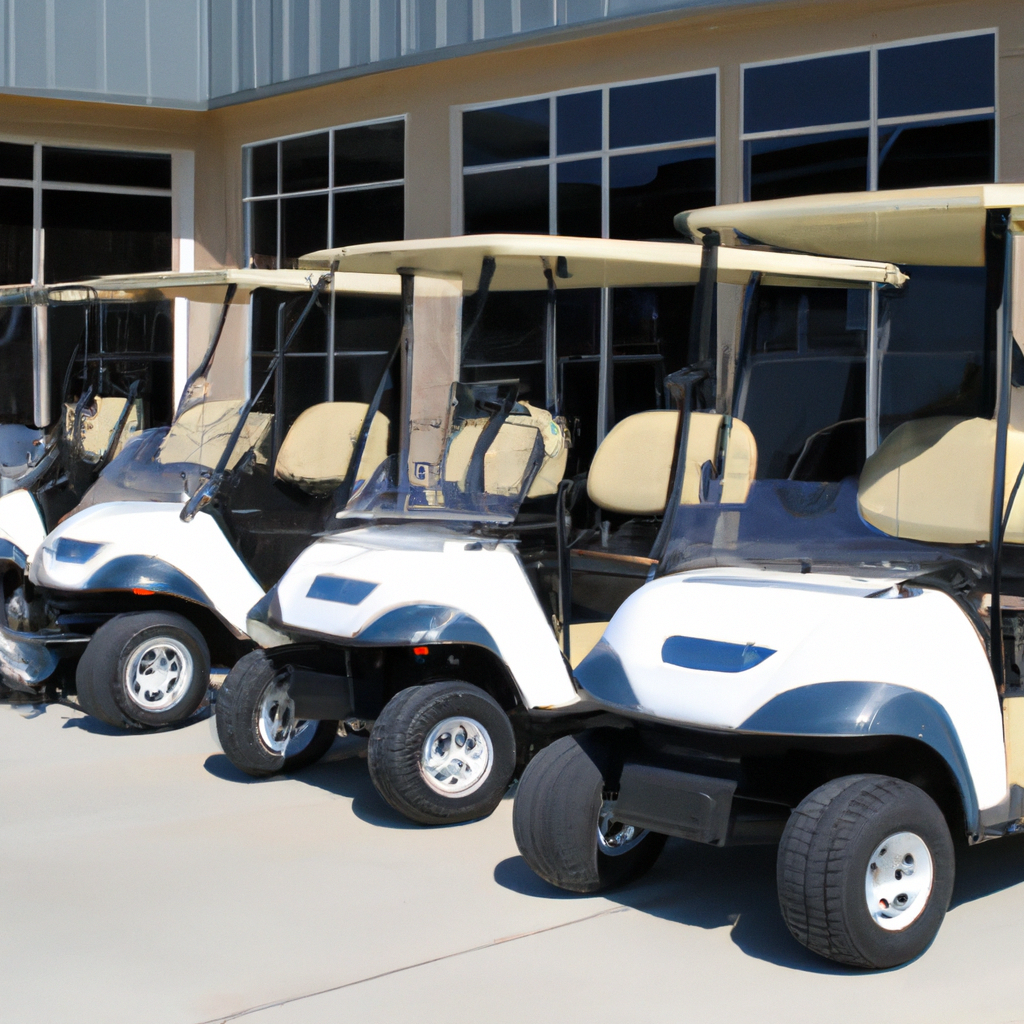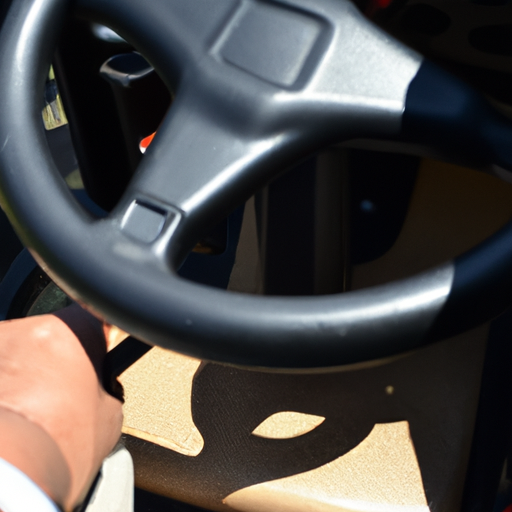Let’s clear the air on whether a golf cart is considered a motorized vehicle. When it comes to golf carts, there’s often confusion around their classification. While they may seem like a fun and leisurely way to get around, the reality is that the status of a golf cart as a motorized vehicle varies depending on the situation. In some cases, golf carts are indeed classified as motor vehicles, while in others they may be exempt from certain regulations. So, let’s take a closer look and demystify the world of golf cart classification.

Definition of a Motorized Vehicle
Legal and technical definitions
A motorized vehicle is commonly defined as a type of vehicle that is powered by an engine or motor and is capable of transporting people or goods. From a legal perspective, the definition of a motorized vehicle may vary depending on the jurisdiction. However, in general, motorized vehicles are considered to be any self-propelled vehicles that operate on roads or other designated areas.
From a technical standpoint, a motorized vehicle typically consists of a chassis or frame, an engine or motor, a power source, wheels or tracks for movement, and various controls for steering, braking, and acceleration.
Types of motorized vehicles
Motorized vehicles encompass a wide range of vehicles, including cars, motorcycles, trucks, buses, and even certain recreational vehicles. These vehicles can differ in terms of size, power, purpose, and capabilities. Each type of motorized vehicle is designed for specific uses and may have different regulations and requirements associated with it.
Characteristics of a Golf Cart
Power source
Golf carts are typically powered by either an electric motor or a small gasoline engine. Electric golf carts are the most common type and are powered by batteries which can be recharged. Gasoline-powered golf carts, on the other hand, use internal combustion engines fueled by gasoline.
Speed and capacity
Golf carts are designed for lower speeds and are generally not meant for highway or interstate travel. The speed of a golf cart can vary depending on its design and power source, but most are limited to speeds of around 15 to 25 miles per hour. As for capacity, golf carts generally have seating for two to four people, although larger models designed for passenger transportation may accommodate more occupants.
Design and construction
Golf carts are typically compact vehicles designed for easy maneuverability on golf courses and other designated areas. They are usually lightweight and feature a simple design with open-air seating. Most golf carts have a platform-like structure with an area to store golf bags, and some models may include additional features such as headlights, taillights, turn signals, and rearview mirrors.
Licensing and Registration
Requirements for motorized vehicles
Licensing and registration requirements for motorized vehicles depend on the applicable laws and regulations of the specific jurisdiction. In many regions, motorized vehicles such as cars, motorcycles, and trucks must be registered with the relevant motor vehicle authority and display license plates. Additionally, drivers of these vehicles are typically required to hold a valid driver’s license.
Specific regulations for golf carts
Golf carts, being primarily designed for recreational use within restricted areas, may have different licensing and registration requirements. In some places, golf carts are exempt from registration and licensing if they are solely operated on private property or designated golf courses. However, if a golf cart is intended for use on public roads, certain states or municipalities may require registration, insurance, and a restricted-use permit.

Roadworthiness and Safety Features
Vehicle inspections
Motorized vehicles like cars and motorcycles are often subject to regular inspections to ensure their roadworthiness and compliance with safety standards. These inspections typically cover areas such as brakes, lights, tires, steering, and emission systems. Golf carts, due to their limited use and lower speeds, may not be subject to the same inspection requirements as traditional motor vehicles in many jurisdictions. However, it is still important to ensure that a golf cart is in good working condition and equipped with essential safety features.
Safety equipment and standards
While golf carts may not be subject to the same safety regulations as motor vehicles, they should still be equipped with certain safety features to protect the occupants and other road users. These features may include headlights, taillights, reflectors, turn signals, seat belts, and rearview mirrors. Additionally, golf cart users should adhere to safety practices such as driving at appropriate speeds, avoiding reckless behavior, and yielding to pedestrians.
Comparing golf carts to motor vehicles
Golf carts are generally smaller and less powerful than motor vehicles like cars and motorcycles. Due to their lower speeds and restricted use, the safety standards and regulations for golf carts may differ from those of motor vehicles. However, it is important to note that while golf carts may have limitations in terms of speed and size, they should still be operated responsibly and in accordance with applicable laws and regulations to ensure the safety of both occupants and others on the road.
Operating Golf Carts on Public Roads
Golf cart usage restrictions
The usage of golf carts on public roads is subject to specific restrictions, which may vary based on local or state laws. In some jurisdictions, golf carts are only permitted on roads with lower speed limits, such as residential areas or designated zones. The use of golf carts on highways or major roads is typically prohibited due to safety concerns. It is crucial to familiarize oneself with the specific rules and regulations pertaining to golf cart usage in the area of operation to ensure compliance and safety.
Special permissions and restrictions
In certain cases, special permissions or restrictions may apply to the operation of golf carts on public roads. For example, some municipalities may require the acquisition of a restricted-use permit that allows golf carts to travel on designated roads. Other areas may impose restrictions on the usage of golf carts during specific hours or limit their operation to certain routes. Additionally, operators of golf carts may be required to follow traffic laws, including yielding to pedestrians, obeying traffic signals, and staying in designated areas.
Insurance and Liability
Coverage for motorized vehicles
Motor vehicles, including cars, motorcycles, and trucks, are typically required to be insured to protect against potential damages, injuries, or liabilities resulting from accidents. Insurance coverage for motorized vehicles often includes liability coverage, which helps to compensate for damages inflicted on others in the event of an accident, as well as collision or comprehensive coverage to address vehicle damage or loss.
Insurance requirements for golf carts
The insurance requirements for golf carts can vary depending on the jurisdiction and intended use. While golf carts may not always require insurance when limited to private property or golf courses, insurance coverage may be necessary when operating a golf cart on public roads. It is recommended to consult with an insurance provider familiar with local regulations to determine the appropriate coverage for a golf cart and ensure both legal compliance and protection against unforeseen events.
Local and State Laws
Variances in regulations from one jurisdiction to another
Laws and regulations regarding the operation of motorized vehicles, including golf carts, can vary significantly from one jurisdiction to another. The requirements for licensing, registration, insurance, and usage restrictions may be subject to state or local laws. It is essential to consult the specific statutes and regulations of the intended area of operation to understand the applicable rules and obligations associated with using a golf cart.
Golf cart-specific laws
Many states and municipalities have established specific laws and regulations that directly address the operation of golf carts. These laws may cover various aspects, such as speed limits, permitted roads and areas of operation, equipment requirements, and age restrictions for drivers. Some jurisdictions may also impose fines or penalties for non-compliance with these golf cart-specific laws. It is crucial to be aware of these regulations to ensure safe and legal use of a golf cart.
Differences between Golf Carts and Other Motorized Vehicles
Comparison with cars and motorcycles
When comparing golf carts to cars and motorcycles, several distinctions become evident. Cars and motorcycles are designed for higher speeds and longer-range travel, while golf carts are intended for shorter distances at lower speeds. Motor vehicles typically require licensure, registration, and insurance, whereas golf carts may have more relaxed requirements depending on the jurisdiction. Additionally, cars and motorcycles are subject to more stringent safety regulations and equipment standards compared to golf carts.
Different regulations for golf carts
Due to the unique nature and limited use of golf carts, specific regulations may be in place that differ from those applied to traditional motor vehicles. While golf carts may not require all the same legal and safety measures as cars and motorcycles, they are still subject to certain restrictions and requirements. It is important to understand these distinctions to ensure the appropriate compliance when operating a golf cart and to prioritize the safety of everyone involved.
Golf Courses and Residential Communities
Golf cart use within private property
Within private property, such as golf courses and residential communities, golf carts are often the primary means of transportation. Golf courses usually have designated paths and routes for golf carts, ensuring the smooth flow of traffic and protecting the safety of golfers and pedestrians. Similarly, residential communities may have regulations allowing or even encouraging the use of golf carts for convenient transportation within the neighborhood.
Community rules and regulations
Residential communities commonly establish specific rules and regulations regarding the use of golf carts to maintain order, mitigate potential risks, and promote safety. These rules may include restrictions on speed, traffic flow patterns, designated parking areas, and age restrictions for drivers. Ignoring or violating these community rules can result in fines or other disciplinary actions. It is important to familiarize oneself with the specific guidelines governing golf cart usage within community environments to ensure compliance and harmonious living.
Benefits and Limitations of Golf Carts
Advantages for certain applications
Golf carts offer various advantages when used in appropriate settings. On golf courses, they provide an efficient means of transportation between holes, allowing players to conserve energy during their rounds. Additionally, in residential communities or large properties, golf carts can serve as convenient and environmentally-friendly modes of transportation for short trips. Their small size and quiet operation make them suitable for navigating narrow roads or pathways without disturbing the peace.
Limitations and challenges of golf carts
While golf carts have their benefits, it is important to recognize their limitations and challenges. They are not designed for high-speed travel and should not be used on highways or major roads. The limited seating capacity may also pose a challenge when transporting larger groups or heavy cargo. Furthermore, the dependence on battery power or gasoline makes long-distance travel impractical without frequent recharging or refueling. Golf cart users should consider these limitations and ensure the appropriate use and care of their vehicles.
In conclusion, golf carts can be considered motorized vehicles, albeit with specific characteristics, regulations, and limitations. Understanding the definitions, requirements, and regulations associated with golf carts is essential to ensure their safe and legal operation. Whether on a golf course or within a residential community, golf cart users should prioritize safety, adhere to applicable laws, and respect the unique regulations governing their use. By doing so, they can fully enjoy the benefits and convenience that golf carts provide while minimizing any potential risks or issues.
